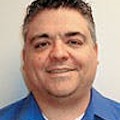After hearing Avery speak at the Paint, Body & Equipment Specialists Conference in May, I had to ask myself how anyone could work regularly in such an uncomfortable environment. The answer actually is pretty obvious. If you're going to be in business, dealing with uncomfortable situations is just part of a day's work.
We could all take a lesson from that.
Unfortunately, right now I don't think enough of us are. Too many shops are ignoring what amounts to the single most uncomfortable truth in the collision repair industry. The already shrinking number of shops is poised to shrink significantly more.
Simply put, our market is oversaturated with repair businesses.Sure, there's a lot of work out there, but in our business environment, there isn't enough work — enough dollars — to properly sustain the more than 45,000 shops in the United States. Industry analysts have said for some time that a number of shops aren't going to make it, particularly small shops, especially those near urban areas, and shops without a lot of cash flow.
Plenty of shops already are struggling. Many have struggled for some time. Quite a few are on the verge right now of closing their doors. The challenges they'll face to stay in business are only growing. The cost of doing business is set to increase significantly as shops are compelled to make expensive upgrades in training and equipment to work on materials like high-strength steels. They'll face fewer repair opportunities as repair costs rise; finding and keeping quality techs will remain tough, and insurance and compensation costs will continue to rise. Throw in the inflexible, outdated business model many shops adhere to, and you end up with the bleak future we're looking at now.
If you have any lingering doubts about this happening, just look at what State Farm and other insurers are doing with the number of shops in their direct repair programs. They're cutting numbers, and they're doing it now. State Farm has publicly stated it cut by half the shops in its Service First program saying the program was over capacity and needed to be in line with other insurer's programs. While that may be true, when State Farm or other insurers make moves like this, you can bet they've worked in other factors — for example, industry projections that there will be notably fewer shops around in the near future. You might just fall into that category.
Enough with the bad news. It's time for action. Real action.
I suspect the major difference between those shops that make it and those that don't will come down to those that are willing to take the difficult steps to transform their businesses into something that will survive in these changing times. That can mean a lot of things. But it all starts with getting out of your comfort zone and doing something different.
A little discomfort can be a good thing. A lot might save your business.
Tim Sramcik
About the Author

Tim Sramcik
Tim Sramcik began writing for ABRN over 20 years ago. He has produced numerous news, technical and feature articles covering virtually every aspect of the collision repair market. In 2004, the American Society of Business Publication Editors recognized his work with two awards. Sramcik also has written extensively for Motor Age and Aftermarket Business World. Connect with Sramcik on LinkedIn and see more of his work on Muck Rack.